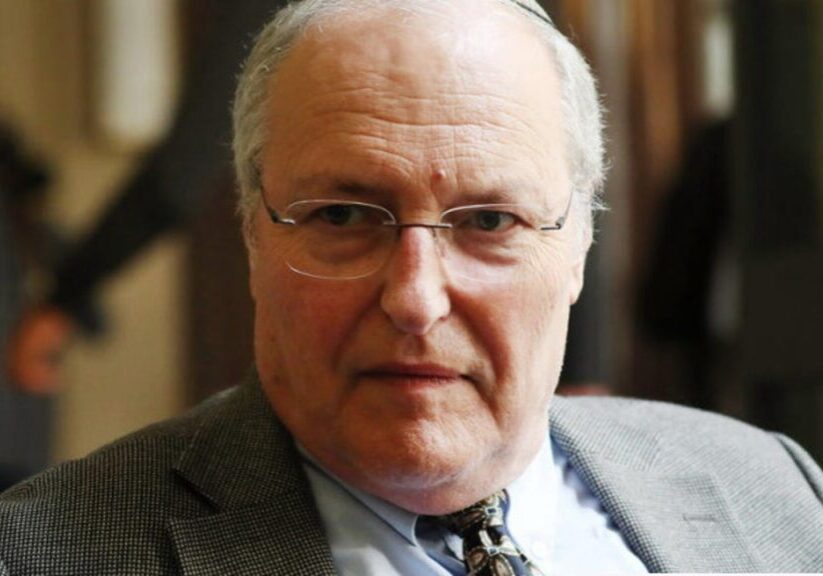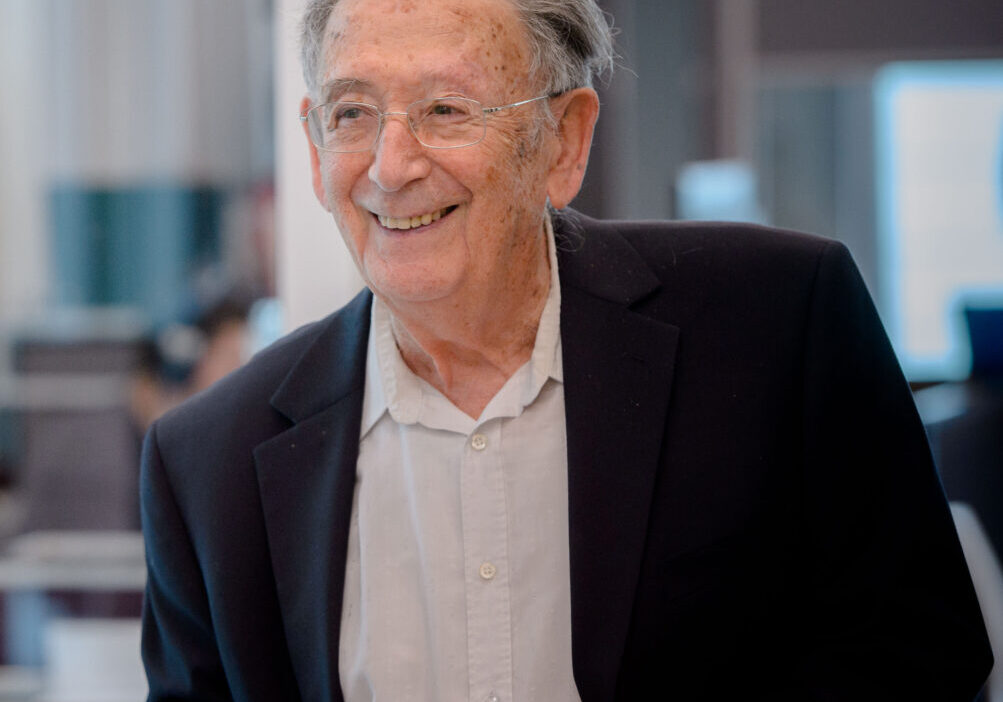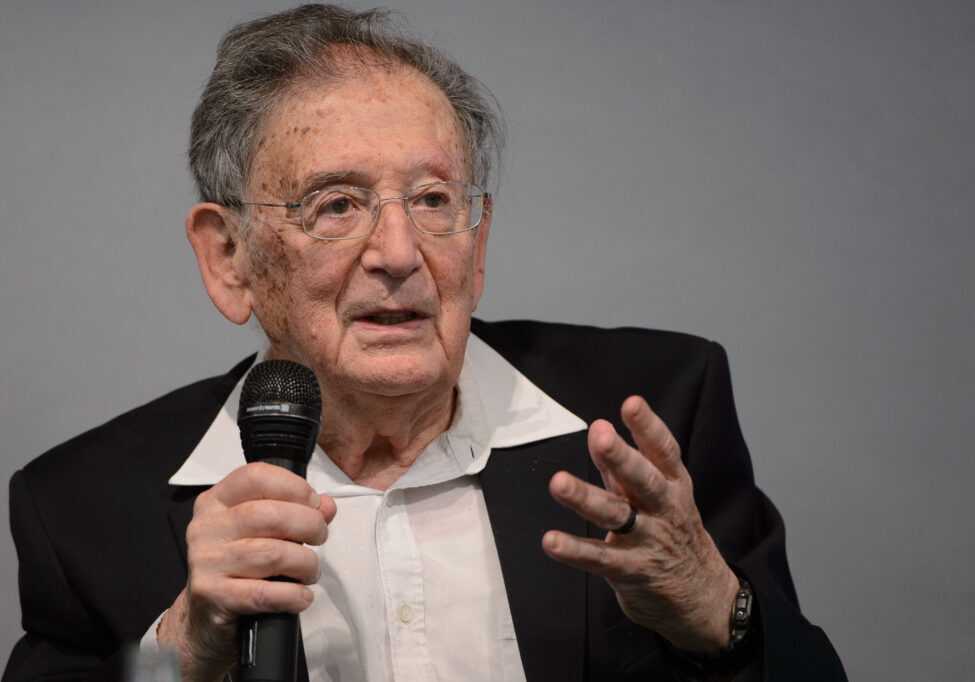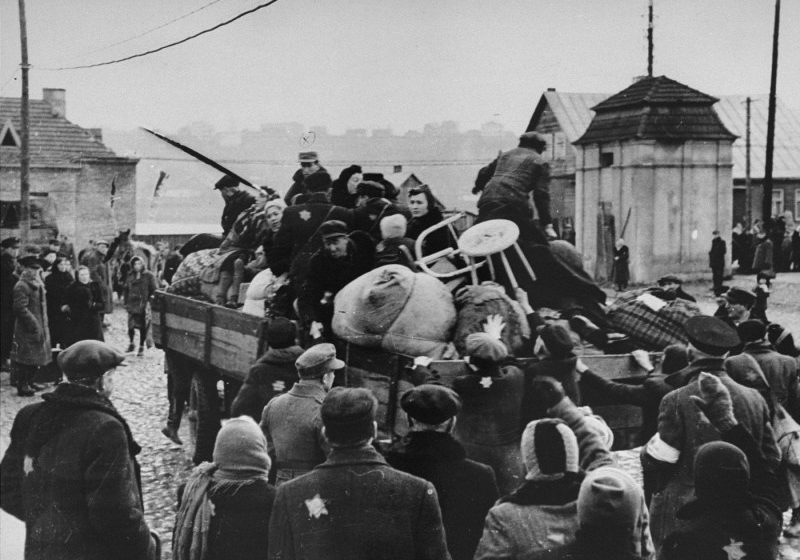Australia/Israel Review
Essay: A True Crime
Apr 1, 2022 | Jonathan Tobin

Anne Frank “investigation” trashes the Holocaust
Books, movies, and television shows about actual murder cases have been a staple of popular culture ever since Truman Capote turned the story of a gruesome Kansas family slaying into his mammoth 1966 bestseller, In Cold Blood. Capote launched a genre, now commonly known as True Crime. As the available fare on 2022 cable and streaming services demonstrates, the public’s appetite here is insatiable.
It was therefore inevitable that sooner or later an author or a team of would-be detectives would take up the case of who was responsible for betraying the teenage girl whom Dara Horn aptly described in her book People Love Dead Jews as “everyone’s (second) favorite Jew”: Anne Frank.
Among the most frequently asked questions by tourists who visit the Anne Frank House in Amsterdam is who was responsible for the raid on the secret annexe behind the false bookcase at Prinsengracht 263 on Aug. 4, 1944. For more than two years, eight Jews (Otto, Edith, Margot, and Anne Frank; Herman, Augusta, and Peter van Pels; and Fritz Pfeffer) had hidden in the annexe above the warehouse where Otto Frank had run his business. All were arrested. Only Otto survived their imprisonment in the Westerbork Camp and then their subsequent transport to Auschwitz. The other seven, including Anne, perished in the death camps. Her diary, found later, would immortalise all of them.
Dutch authorities conducted two investigations into the betrayal, one in the immediate post-war era and another in 1963, but no culprit was discovered. Over the years, suspicion has fallen on several figures. Willem van Maarten, a warehouse employee who had asked a lot of questions of those who were helping the hidden Jews, was long considered the most likely betrayer. Other suspects included Lena Hartog, the wife of the assistant manager of the warehouse; Anton Ahlers, a notorious criminal; Nelly Voskujil, the sister of one of the helpers; and Anna van Dijk, a Jewish woman later convicted of helping the Nazis find hidden Jews and the sole Dutch woman executed for the crime of collaboration.
But conclusive proof or anything close to it has always been lacking. The only real clue was the fact that the Nazi SD officer who led the raid on the annexe, Otto Silbernauer, claimed it was prompted by a phone call from a source with information about hidden Jews.
Since we know the identity of the true culprit – Hitler – the mechanics of the Frank family’s exposure would not really seem to matter much. But for True Crime obsessives, an unsolved mystery is a challenge not to be ignored. In 2016, Dutch filmmaker Thijs Bayens and journalist Pieter van Twisk assembled a team to investigate. Former FBI agent Vince Panoke, who had used profiling techniques and technology to combat drug traffickers and Wall Street swindlers in America, subsequently joined them. The team was completed when Canadian non-fiction author Rosemary Sullivan, who had previously written a book about escape from France during the Holocaust, joined their ranks in 2019 as the Cold Case Team’s (the term is used in initial caps by Sullivan) Boswell.
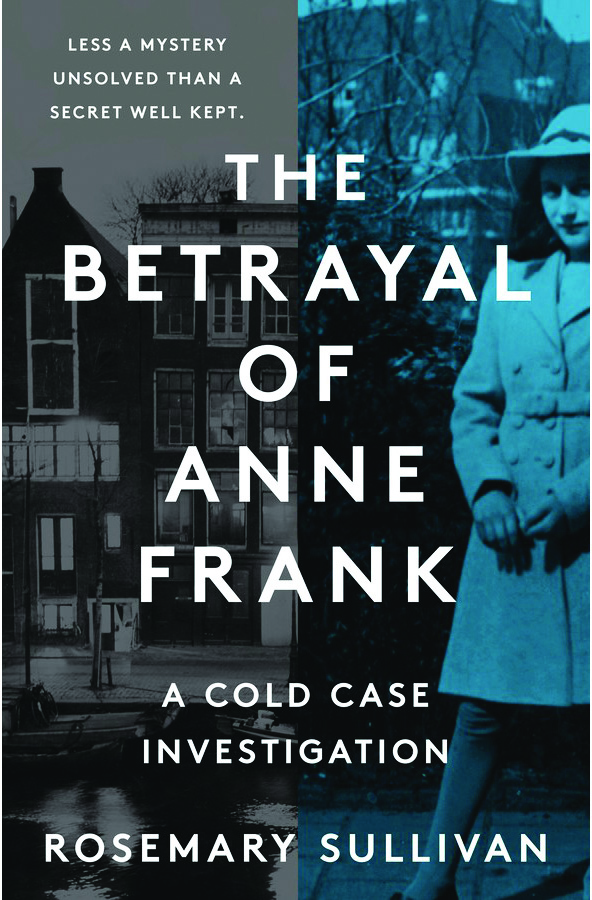 Sullivan turned the team’s six years of labour into a book called The Betrayal of Anne Frank: A Cold Case Investigation.
Sullivan turned the team’s six years of labour into a book called The Betrayal of Anne Frank: A Cold Case Investigation.
According to Sullivan, after considering the case from every angle and even employing an artificial intelligence program specially created for them by Microsoft and metadata analysis to make sense of the mountains of information about the Holocaust in the Netherlands, the team produced an answer to the mystery. The team was “85 percent” sure that the person who betrayed the Franks and the others in the annexe was someone even those well-versed in the lore of the diary had never heard of. His name: Arnold van den Bergh. He was a Dutch-Jewish notary and a member of the Jewish Council of community members that had, like similar councils in every other occupied country and ghetto, collaborated with the Germans.
The sole piece of evidence for this claim was an anonymous note sent to Otto Frank after the war. The note claimed that van den Bergh had given the Germans information about Prinsengracht 263, which led to the raid. While it is possible that Frank believed the claim, he did not publicise it in any way or present it or the note when van den Bergh was put on trial by a Jewish honour court after the war.
The assumption here is that van den Bergh had somehow obtained the addresses of Jews living in hiding and passed them on to his German interlocutors so that he could escape the fate of deportation and murder that would be the lot of 75% of Dutch Jews. Though van den Bergh survived the war, he died of cancer in 1950.
Sullivan’s book was rolled out in January 2022 by its American publisher with the kind of ballyhoo most authors could only dream of. An exclusive segment on the US version of “60 Minutes” highlighted the book and its findings while asking no tough questions about the broad conclusions Sullivan and her Cold Case Team heroes had reached. Laudatory reviews in the New York Times, the Guardian, and many other publications soon followed.
In the initial surge of good publicity, some did note that the evidence pointing to van den Bergh’s guilt was, at best, flimsy. But the book was praised for Sullivan’s narrative skills and the picture she painted of life in wartime Holland as seen through the prism of detectives searching for the truth about the identity of the person who cut short the life of a beloved figure. Stories in newspapers around the world heralded their achievement, with some, like Britain’s Daily Mail, employing headlines that proclaimed, “Anne Frank was betrayed by a JEWISH notary.”
It would take only a couple of weeks for all the good feelings about Sullivan and the book to evaporate. Once the Harper Collins publicity blitz had run its initial course, the book stayed in the news – but for reasons that were not to the liking of the author or her publisher.
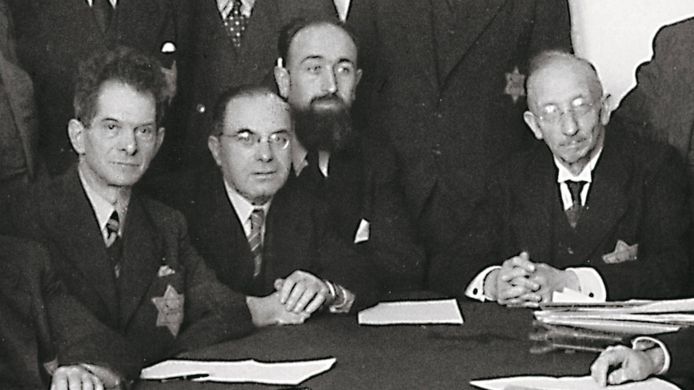
Arnold van den Bergh (second from left): Accused of betraying Anne Frank’s family
Holocaust historians including the Dutch author David Barnouw pointed out that there is no real proof that the Jewish Council in Amsterdam had possessed the addresses of the Jews who were hiding there, least of all the address of Otto Frank, who had plotted his escape with his former employees and not with the Dutch resistance. Moreover, the Jewish Council had been disbanded in 1943, with most of its staff deported and murdered – the Franks were betrayed in 1944.
Van den Bergh was a shady character who had profited from the sale of Jewish property to Nazis before having to go underground himself to save his life and those of his wife and daughters. But nothing uncovered in the investigation linked him to the possession of such addresses or any knowledge of Jews in hiding other than his own family.
It is also worth noting that the software and the FBI crime-solving techniques the team employed did not advance the case a jot. And while the team did locate a copy of the anonymous accusation against van den Bergh, its members were not able to discover who had sent it or why its author believed him to be guilty.
Like those who had come before, the team came to the conclusion that the more obvious suspects, like Maarten, were probably innocent. Some historians, faced with the same evidence, have come to believe that, with other scenarios ruled out, the most likely answer to the puzzle is that there was no betrayer. It may have been that the raid was an accident caused by a series of robberies of the warehouse that had come to the attention of the police. Though this theory, like all the others, is unproven, it does make sense that authorities might have concluded that thieves were using a secret hiding place in the building to escape detection or for storing loot and happened upon the hidden Jews without being tipped to their presence there.
But a True Crime tale simply cannot allow for the possibility that a mystery may never be solved. Its heroes these days are primarily dogged people who take up heretofore cold cases and bring the truth behind them to light. For the Cold Case Team to come to the end of its labours without producing a murderer would have been unthinkable – not to mention that it would have ended any hope of its investigation being considered a success and Sullivan’s book a commercial triumph. And so they implicated a Jew in the murder of a secular saint at a time of rising antisemitism in America, Europe, and across the globe.
Neither Sullivan nor Harper Collins backed down in the face of a torrent of criticism, including a highly negative New York Times article on the controversy. Sales have been brisk, helped along by the Costco discount outlet making the book a “buyer’s pick”.
But the German division of Harper Collins has not been so sanguine. It released a statement that it would reconsider the book’s findings before publishing it in March. Even worse for the book, Ambo Anthos, a publishing firm that had produced a Dutch translation of The Betrayal of Anne Frank on the same date as the US release, halted publication entirely. That was in keeping with the demand of the European Jewish Congress, which believes that the book’s unproven accusations are “potentially incendiary” in the current climate in which Jews have been under siege in Western Europe.
This all matters because Anne’s diary is the best-known example of Holocaust literature. Rather than just the jottings of a bored teen trapped in an intolerable rabbit warren where she, her family, and a few others were forced to live in silence, The Diary of a Young Girl is a genuinely great work of literature. Anne’s keen powers of observation and honesty, mixed with the hopes and dreams of a teen who still envisioned a productive life once her ordeal was over, have made the Diary immortal. Its unique power is rooted in the way ordinary readers, especially young ones, can identify with Anne and the idea of having to hide to avoid being murdered by totalitarian thugs.
The Diary subsequently was adapted into a hit play and then movie – with much of the specifically Jewish content edited out by authors who, acting with the approval of Otto Frank, wanted to make Anne into a universal heroine rather than a Jewish one. Frank had also seen to it that Anne’s thoughts about her sexuality and some of the more bitter criticisms of her mother were not included in the first published editions.
The universalist theme is reinforced by the much-quoted line toward the end when Anne writes, “I still believe, that in spite of everything, that people are truly good at heart.” As Dara Horn notes, Anne thereby became “the innocent dead girl” who “offered us grace” for the slaughter of six million Jews, and thereby allowed readers to glide past and through the brutal facts of a genocide. As more than a few Jewish commentators have noted, Anne would soon be given every reason to understand that people are not good of heart – especially when the fate of powerless Jews is at stake – when she had to watch her mother and sister succumb to disease and hunger before herself dying at the Bergen-Belsen concentration camp. But that grim truth is not a lesson as easy to stomach as the one that tells us that we can all prevent Holocausts by being nice to one another.
What makes The Betrayal of Anne Frank so extraordinarily tone-deaf to the implications of its conclusion is not just the paper-thin nature of the case it makes against van den Bergh. Leave aside the fact that there’s no reasonable basis to conclude with 85% (or any other arbitrary number) certainty that van den Bergh was the culprit. What’s worse is the fact that Sullivan and the investigators spent so little of their time trying to make sense of the complicated dilemmas faced by the various Jewish Councils (or Judenrats, as they were called in Eastern Europe) set up by the Germans in every occupied country.
Though Judenrats were reviled by the Jews they governed for the Nazis, and especially by those who chose the more heroic path of resistance, Holocaust scholars now see the members of the councils as just a different class of victim rather than active collaborators. Many of those on the councils were given little choice about joining. And even if some did volunteer, few if any of them knew enough about what was going on to be considered shameless criminals by history.
In Isaiah Trunk’s 1972 book Judenrat – the single best study of the topic – he outlines the three basic questions that needed to be asked about the members of these bodies. One was whether they should have revealed to the Jews in their communities any knowledge they might have had of the impending disaster facing them. The second was whether any Jew, however reluctantly, lent a hand in the “selection” of Jews for the deportations that meant almost certain death. The third – and the one that applies almost across the board to all those placed in such positions, including non-Jewish authorities who either chose or were forced to collaborate with the Germans – is whether they were right to offer up some victims to be sacrificed in order to rescue others.
It is breathtakingly easy for contemporary readers to come to definitive answers to those questions, but doing so in the years from 1941 to 1944 was far harder. Many of those placed on Jewish Councils believed that the Nazis were still more interested in profiting from exploiting the Jews rather than killing them all, and therefore genuinely believed they could save many lives by acting as intermediaries.
Far more notorious examples of these dilemmas exist than the case of van den Bergh. Hungarian Zionist leader Rudolf Kastner negotiated with Final Solution mastermind Adolph Eichmann for the lives of a trainload of Jews who, along with him, did wind up surviving the Holocaust. But Kastner, unlike many others who were placed in such positions, did likely know what awaited those who could not escape. The descendants of those who were saved by him still honour his memory. But his failure to raise awareness among the Jews left behind so that they might seek some method of escape or resistance embittered those who were not so fortunate. He was also accused of betraying the martyred resistance heroine and Hebrew poet Hannah Senesh to the Nazis.
All dramatic depictions of the Holocaust must wrestle with the reality that fiction is ultimately incapable of capturing what Elie Wiesel called “the kingdom of death” the Nazis created – a network of mass murder unlike anything else that had ever existed.
A play by Frances Goodrich and Albert Hackett adapted from Anne’s diary, which debuted to rave reviews in 1955, is a key example of the banality that can ensue. The Goodrich and Hackett play, which has since been revised many times, ends with the quote about people being good at heart. This has the effect of sending audiences home happy even though they know Anne is doomed.
If that is so of even the most well-intentioned depictions of the Holocaust, it is especially true of one that views the murder of even the most famous victim of the Nazis as fodder for True Crime exegesis.
Sullivan’s excited prose, peppered throughout with the sort of clichés that might not pass muster in a “Law & Order” episode (such as her description of an ex-FBI sleuth Panoke as someone who “believes in evil and has seen a lot of it”), sometimes suggests that she’s writing the treatment for a movie script rather than a work of non-fiction.
Attention is lavished on unimportant details about the investigators’ work to draw the reader’s attention more to the process by which they arrive at their conclusion than to the facts of the case, let alone the history.
The claim that an anonymous, untraceable, and unverifiable letter is “the only real physical evidence in their case” is risible. Each effort to build an argument for the team’s assertion of van den Bergh’s guilt is so peppered with ifs, maybes, and probablies that it’s hard to see how it stood up to a fact check or serious editorial scrutiny.
With so little to go on, to focus so relentlessly on one admittedly unheroic Jew to the exclusion of so much other depravity and criminality is as outrageous as it is irresponsible.
What in another context might be forgiven as mere authorial excess or True Crime faux drama in an ordinary murder mystery is, when applied to the story of Anne Frank, an unforgivable bowdlerisation of a topic that requires both humility and seriousness from those who venture onto what ought to be considered sacred space.
The problem here is not that the Cold Case Team and Sullivan failed to provide a convincing answer to the question asked by those who visit the Anne Frank House. Regardless of what might well have been their good intentions, by the time their investigation concluded, its purpose was not to honour Anne’s memory or that of the millions of other Jewish victims. Rather, it was to exploit and profit in a familiar manner from the story of their fate – to portray it as just another notorious homicide.
That they did so by ultimately coming up with a Jewish villain for their drama makes it even worse. For that sin, Sullivan and her publishers deserve far more opprobrium that they have thus far received.
Jonathan S. Tobin is editor in chief of JNS.org and a columnist for the New York Post. © Commentary magazine (www.commentarymagazine.com), reprinted by permission, all rights reserved.
Tags: Holocaust/ War Crimes

